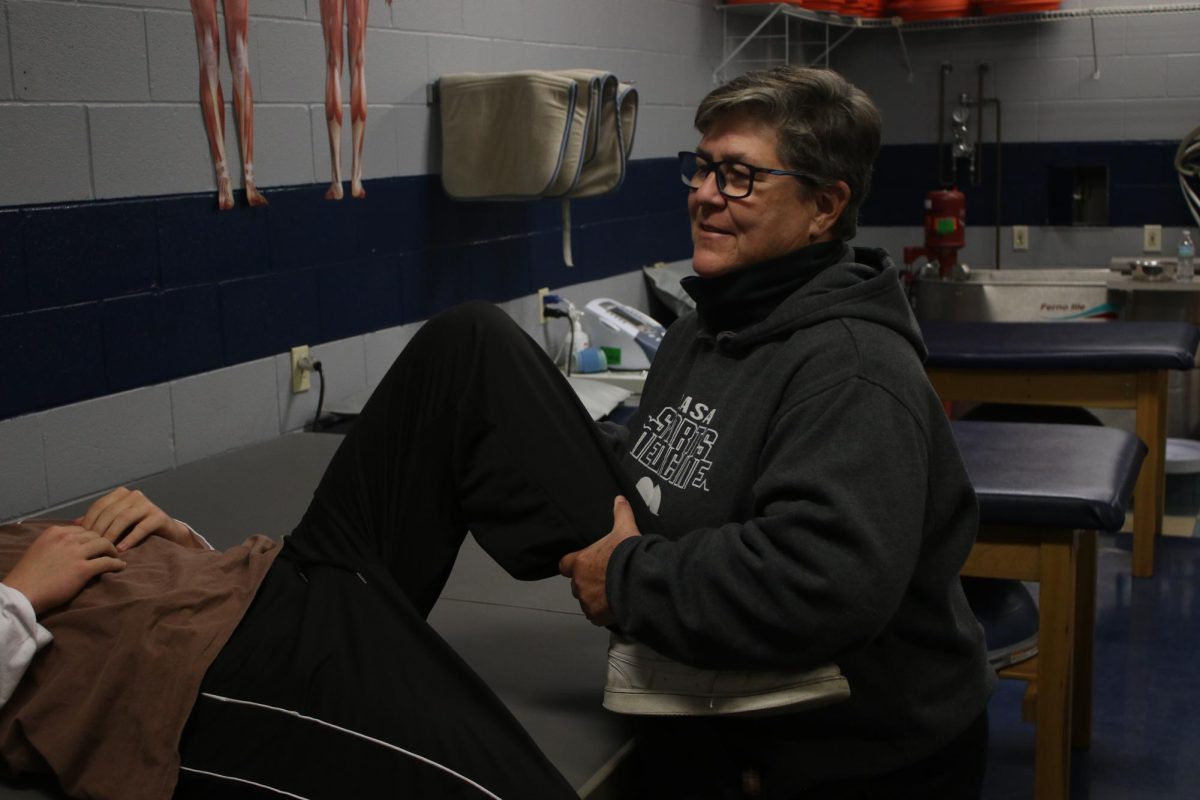I come from a long line of devoted Dallas Cowboys football fans. Both sides of my family love football, and I have grown up watching it my whole life. My love of sports led me to tennis when I was only three years old, and I haven’t stopped in the twelve years since. When I joined the LASA tennis team, I experienced playing a sport with a whole group of people for the first time, so joining the football team for one of their practices and seeing everyone work together was just as heartwarming. Even as such a young group, the football team’s close bond astonished me. They introduced themselves to me and even nicknamed me “Paparazzi.”
On the tennis court, I’m hyper-focused on where I am and where the ball is, blocking out everything else unless I am playing doubles with a teammate. Seeing how necessary teamwork was for the football team was a new and eye-opening experience. From the moment I arrived, I could tell this was more than a sport to these players; it was a tight community and a big part of their lives.
On the day I visited, they were not doing typical drills but a walkthrough, where the team goes through possible in-game situations to plan for the next game. Their ability to communicate and coordinate with each other impressed me, with each player knowing their role and executing it to the best of their abilities every time.
Watching the walkthrough was interesting because it was not just about the routes and throws but about how everything worked together, especially when facing another team. The coaches and players often have to alter otherwise perfectly sound plays because one aspect of timing, positioning, or reacting from their team didn’t work well when put against the opposing team. One scenario involved preparing for a fourth-down play, where every player had to be fully aware of the offensive and defensive possibilities. The coaches frequently paused to fine-tune everyone’s positioning, ensuring they knew precisely where to be and why. During each reset, I could see the players adjusting and communicating with one another to make sure everyone was in sync.
While I chose to retire after an exhausting practice, the other team members continued to spend hours every day going through each play, exercising in the weight room, and perfecting their positions. Watching them discuss each detail gave me a true sense of the intense coordination necessary for football. It made me see that football doesn’t always highlight strength or speed but coordinating with everyone on your team to oppose the other team as effectively as possible is also an important factor.
One of the players gave me advice on improving my throw by offering tips on wrist movement and increasing accuracy. I learned that throwing distance and accuracy can improve when the arm follows through across the body after release, with the pointer finger finishing pointed at the target. This follow-through stabilizes the throw and directs it more accurately. Throwing the ball around gave me a good taste of the game and helped me appreciate the skills involved.
The team’s culture was full of trust, constructive criticism, and a collective drive to get better. Whether someone made a good play or one that needed improvement, the coaches and teammates were there to offer honest feedback. This environment allowed everyone to improve together and create a stronger bond backed by trust. Football’s team-based nature makes these connections possible, and they foster a sense of unity found in few other places. Even though most of my participation was from the sidelines, I felt that much of the work happened there. Even during practice, the players’ support from the sideline lifted everyone on the team and was admirable.
I hope that other LASA students who are interested in football try it out, even if that just means practicing on their own until tryouts roll around in the spring. Football is a unique combination of discipline, friendship, and planning that is rare to find in sports. LASA’s football team might be young, but they are resilient as they build a foundation based on trust and the desire to improve. Being part of the practice taught me that football is not only about tackles and touchdowns but also about the community and being part of such a close team. Whether you’re an experienced athlete or a newcomer, LASA football has a place for anyone willing to step up and learn something new.











